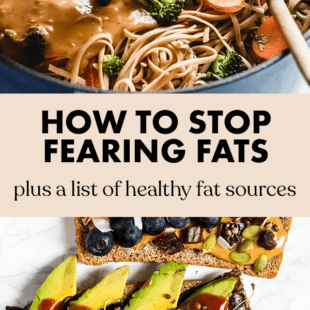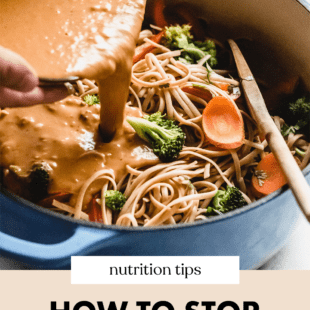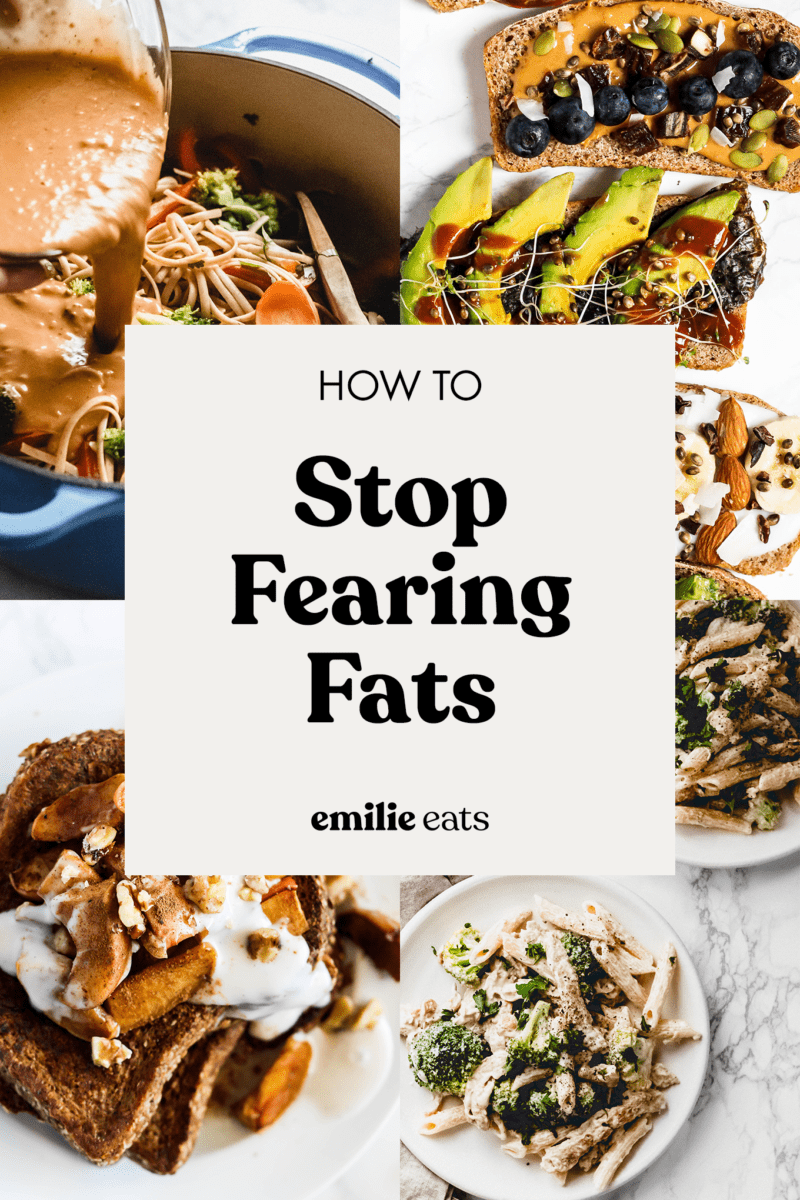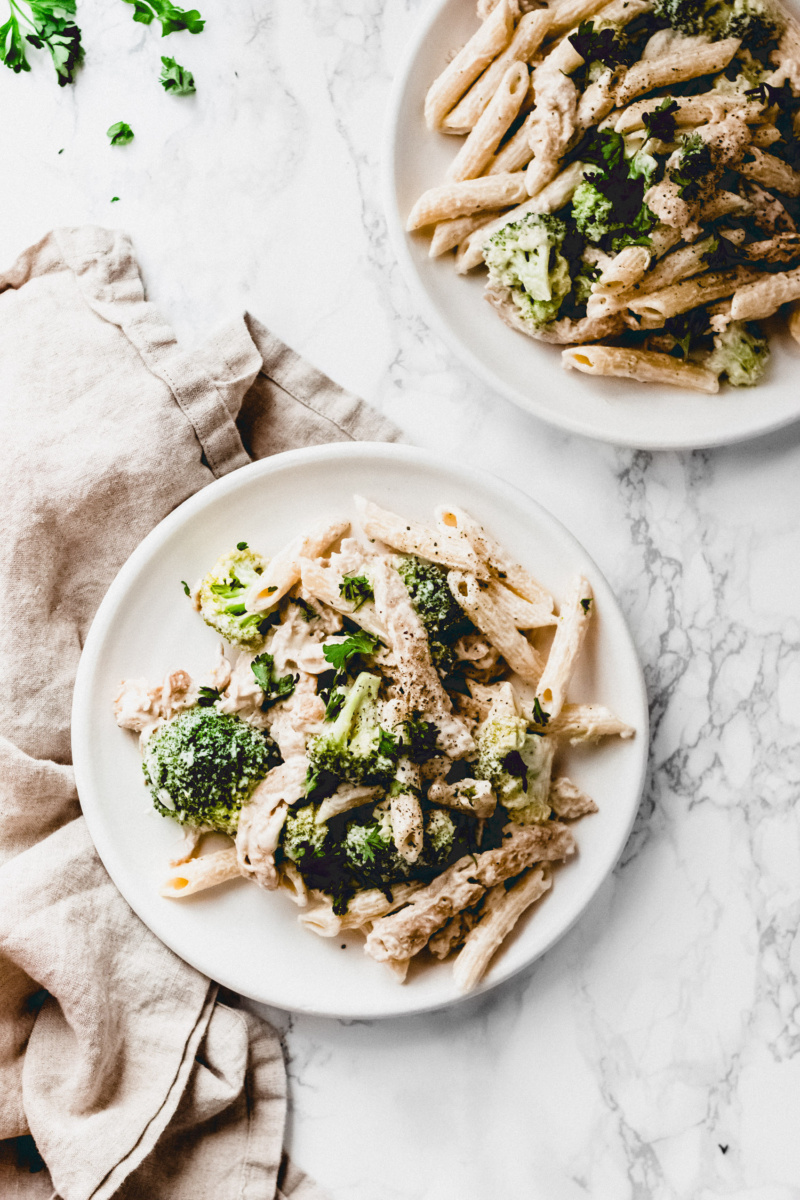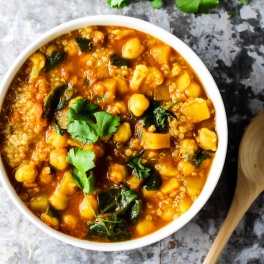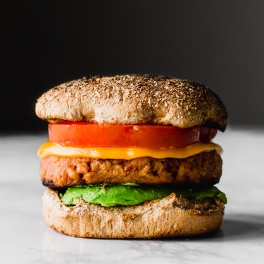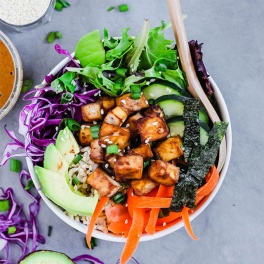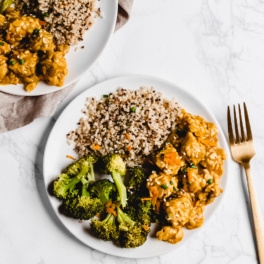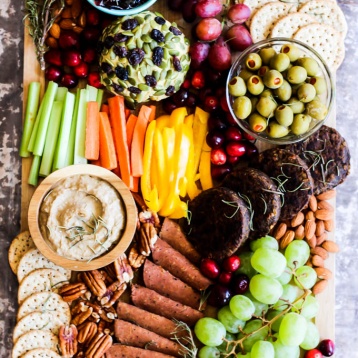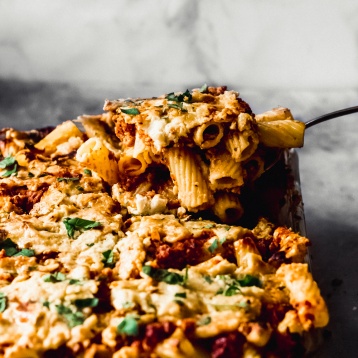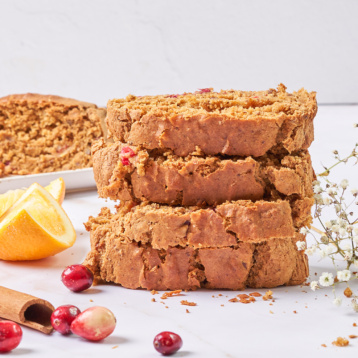What are healthy fats and why do you need them? Here’s how to ditch the fear and incorporate more healthy fat sources into your diet.
Healthy Fats: How To Stop Fearing Fats and Add Them to Your Diet
If carbohydrate is the most demonized of the three macronutrients (carbs, fat, and protein), then fat is next in line. From the low-fat craze of the 1990s to the 2014 TIME Magazine “butter is back” cover and everything in between, it’s no surprise that we’re confused about dietary fat, what kinds of fat to eat, and how much fat to eat.
To add fuel to the fire, the 2015-2016 vegan community was FULL of vegan creators and doctors spouting ultra low-fat recommendations. As I’ve seen with some of my vegan nutrition clients, this advice has had damaging effects, with many people terrified to use olive oil, eat too many avocados, or enjoy a vegan cheeseburger.
This post is going to teach you all about fats: what are “healthy fats,” what is saturated fat, where we can find healthy fats, and debunking some of those low-fat claims.
(A quick PSA before we get into things: I’m using the term “healthy fats” here because it’s a common term in health and nutrition. Healthy means a lot of different things, and we don’t always have to eat traditionally “healthy” foods. Like we always say at the nutrition practice I’m a part of, most of the time, not all of the time.)
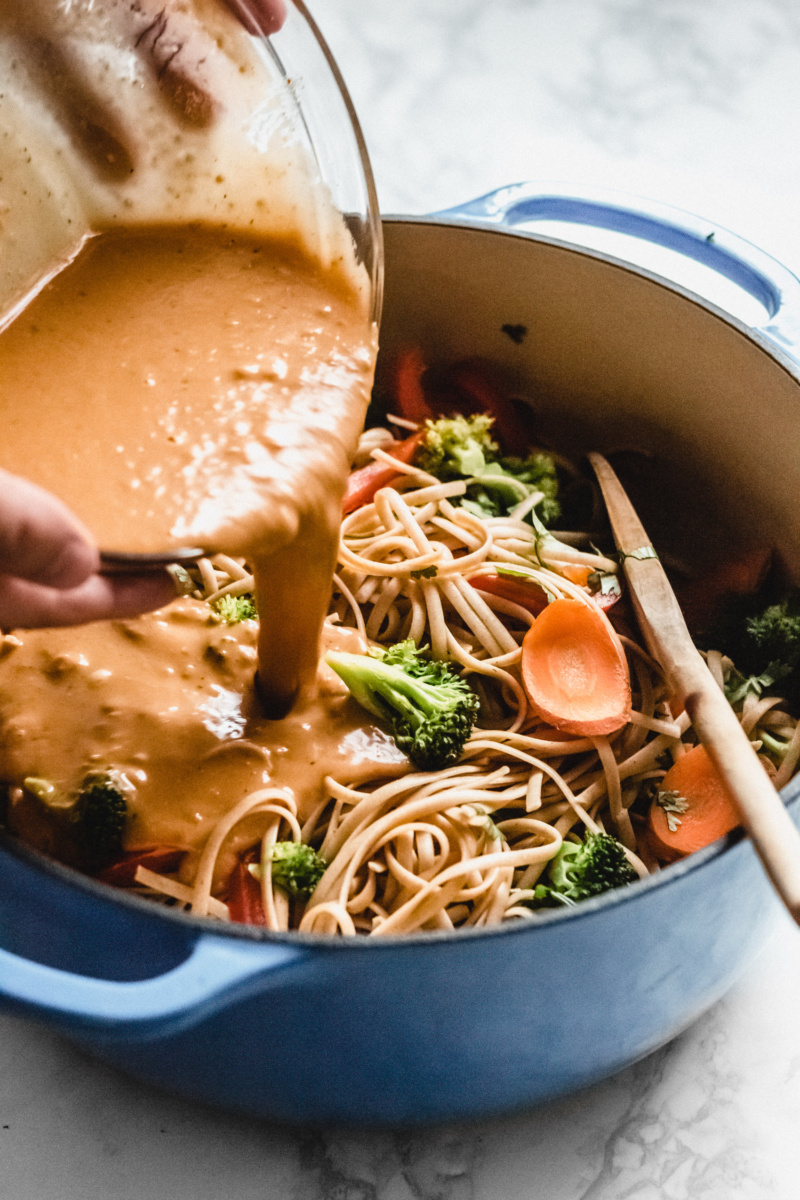
What are Healthy Fats?
First, what does fat do in the body? Dietary fat provides energy, helps us absorb fat-soluble vitamins (A, D, E, and K), and provide structure to cell membranes. Some fats participate in blood clotting and wound healing.
Next, let’s break down all the types of dietary fat:
- Unsaturated fat. This includes monounsaturated fat (MUFA) and polyunsaturated fat (PUFA).
- Saturated fat.
- Trans fat.
Unsaturated fats are considered “healthy fats.” Unsaturated simply means that the main carbon chain in the fat is not saturated with hydrogens on each carbon; rather, it contains at least one double bond. MUFA have one double bond, and PUFA have 2+ double bonds. If you’ve ever heard of omega-3 and omega-6 fatty acids, those are polyunsaturated fats!
Unsaturated fats are associated with lower blood pressure, higher HDL cholesterol (the “good” kind), and lower triglycerides. There is some research linking omega-3 fatty acid intake to lower risk of neurological conditions like dementia and depression, but that research is inconclusive.
Also, a word on trans fat. I’m not one to tell folks to completely avoid a certain food or nutrient, but in this case, I feel comfortable recommending avoiding trans fat. It contributes to inflammation, insulin resistance, and increased LDL cholesterol (the “bad” kind).1 This has gotten easier since the FDA declared trans fat no longer “generally recognized as safe” in 2015. Its use in food products has declined since then, but it can still be found in some foods.
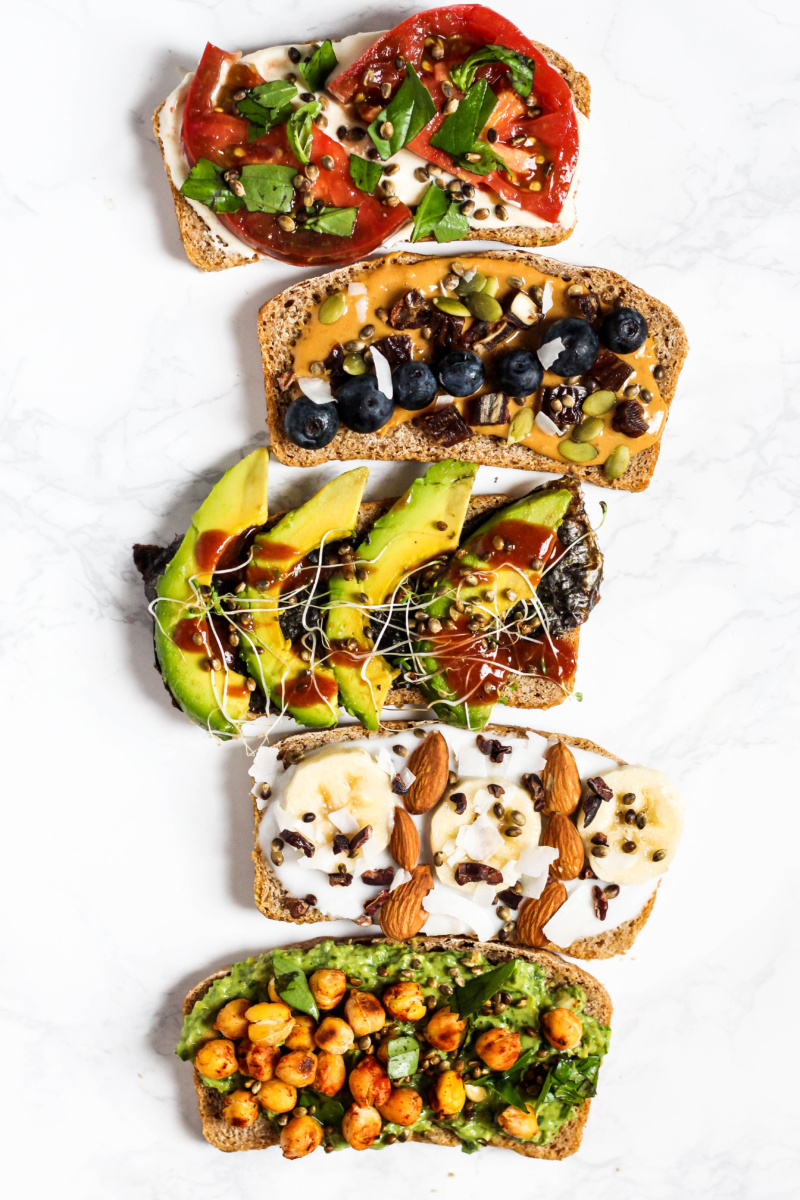
What is Saturated Fat?
Saturated fat has traditionally been deemed “bad fat.” Saturated means that the main carbon chain in the fat is saturated with hydrogens on each carbon; there are no double bonds. Saturated fat is found in animal products like meat, poultry, and dairy, as well as tropical oils like palm and coconut.
The science on saturated fat and health outcomes is not cut-and-dry (as with most nutrition topics). For years, the recommendation has been to reduce saturated fat intake to <10% of daily calories to reduce risk of heart disease and improve other health outcomes. Two large studies found that replacing saturated fat with MUFA, PUFA, or carbohydrates from whole grains (not refined carbohydrates) was associated with lower risk of coronary heart disease.2 However, one meta-analysis of 21 studies found no significant association between saturated fat and increased risk of coronary heart disease or cardiovascular disease.3 One group of experts recently declared that there is no evidence to recommend reducing saturated fat intake to the whole population.4
You may be thinking, “Okay, I’m even more confused about what healthy fats are. What fats do I eat???” Despite the evolving research on saturated fat, I can tell you these things for certain:
- Eating adequate amounts of unsaturated fats is good for our cardiovascular system.
- Some saturated fat in the diet will likely not impact your health in a major way. No one nutrient or food, when eaten in varied diet, is likely to cause detrimental effects.
- Replacing some saturated fat in your diet with unsaturated fat and whole grain carbohydrates (not refined carbohydrates) will likely benefit your cardiovascular system.
Healthy Fat Sources
Finally, let’s talk about what foods contain unsaturated fats so you can include more of them in your diet!
Monounsaturated fats are found in:
- Avocados
- Nuts like almonds, cashews, and pecans
- Nut butters made of the nuts listed above
- Olives
- Olive oil
- Canola oil
- Peanut oil
- Soybean oil
Polyunsaturated fats are found in:
- Walnuts
- Flax seeds
- Tofu
- Soybean oil
- Flax oil
- Corn oil
- Sunflower oil
- Fatty fish like salmon and tuna (if you’re not vegan)
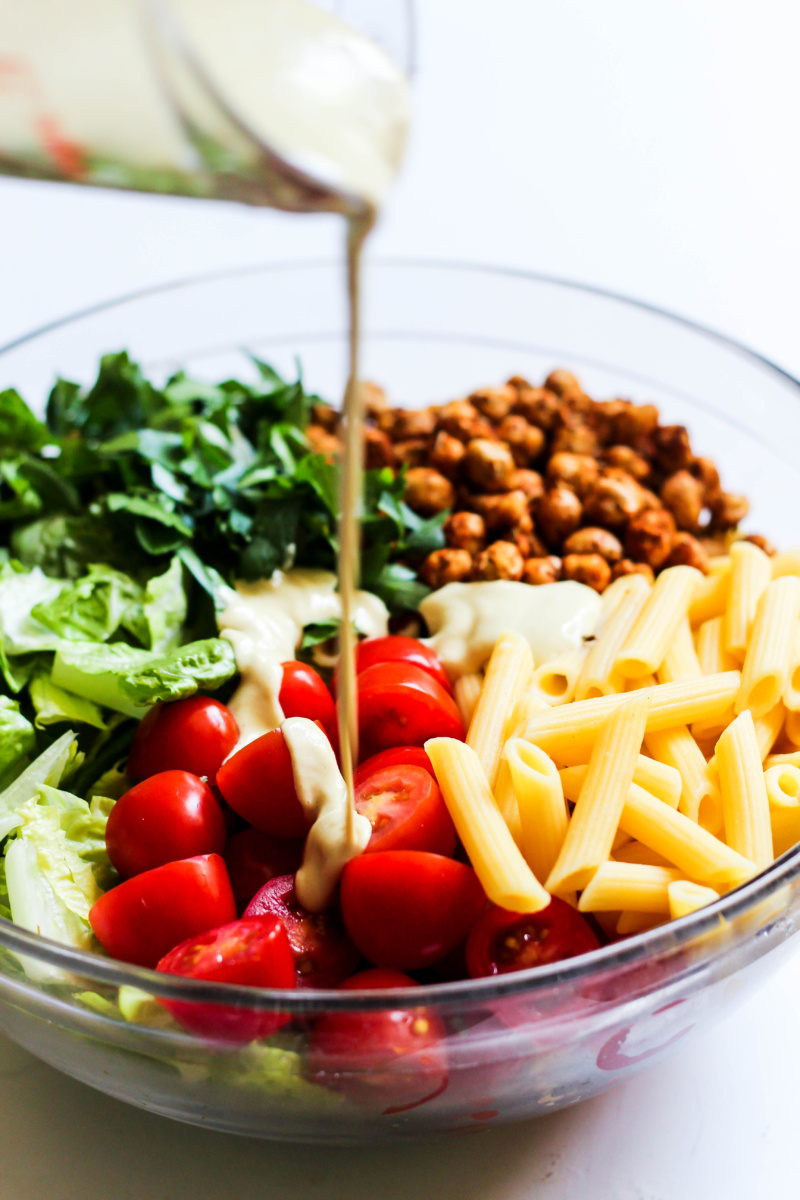
Should You Eat Low-Fat?
So you may have read all that and are still thinking, “Yeah, Emilie, I totally understand all that, but *insert doctor or content creator* told me I should eat super low-fat to avoid health problems.” I hear you!
- Fats help the necessary processes in our body run smoothly.
- Low-fat diets are not associated with reduced risk of coronary heart disease, stroke, or cardiovascular disease.5
- Fat makes food taste better! Imagine eating a dry salad versus a salad with a delicious olive oil dressing. Wouldn’t you eat more vegetables and actually enjoy the experience with dressing on the salad?
In general, most of us should aim for 25-35% of total calories from fat. I’m not a fan of counting or weighing food or being obsessed about numbers, though, so the best way to ensure you’re getting an adequate amount of fat is to include a fat source (most of the time, “healthy fats”) at all meals and some snacks. That could look like:
- Breakfast: Tofu scramble with avocado toast
- Lunch: Sandwich with a salad tossed in olive oil
- Snack: Apple and peanut butter
- Dinner: Vegan sushi bowl with tofu, rice, carrots, and cucumbers, topped with sriracha mayonnaise
- Dessert: Fruit or a brownie topped with coconut cream
Interested in working with a dietitian on individual nutrition concerns? Read about my client packages, the types of clients I work with, and how we may be able to work together.
- https://www.health.harvard.edu/staying-healthy/the-truth-about-fats-bad-and-good
- https://www.ncbi.nlm.nih.gov/pmc/articles/PMC4593072/
- https://www.ncbi.nlm.nih.gov/pmc/articles/PMC2824152/
- https://www.jacc.org/doi/abs/10.1016/j.jacc.2020.05.077
- https://jamanetwork.com/journals/jama/article-abstract/202339

